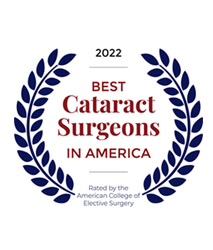It’s been quite some time since the laser moved from science fiction to “science truth,” so to speak. Today laser surgery is routine at our Dallas/Fort Worth practice, and more patients seem to be familiar with it than ever before.
The first laser was approved for LASIK eye surgery in 1998. While surgeons still had to use a blade to cut the corneal flap (the first step in LASIK surgery) they were able to use a laser to remove the tissue underneath.
In 2001 the femtosecond laser came along which allowed surgeons to create the corneal flap without a blade. This revolutionized LASIK surgery in that a procedure could be “blade-free” or “all-laser” (a more accurate description according to many doctors today).
LASIK surgery is still performed using a bladed instrument called a “microkeratome.” On average, however, all-laser LASIK has been found to deliver a higher level of accuracy. It has also been found to lessen the risk of complications, such as corneal abrasions or irregular flaps. All-laser surgery can be more expensive, but most LASIK patients find the advantages are well worth it once they’re fully educated as to its benefits and risks.
The laser has now evolved to benefit cataract patients. Specifically, with the more recent development of laser-assisted cataract surgery using the femtosecond laser.
Dr. Labor now uses the first femtosecond laser approved for cataract surgery: the LenSx. The femtosecond laser can help cataract patients enjoy the same types of results LASIK patients have for years. It even allows the procedure to be customized to each eye’s unique features for more accurate, predictable outcomes. Due to its advanced precision, laser-assisted surgery has also been found particularly effective in treating astigmatism.
No doubt, traditional cataract surgery has come a long way in terms of safety, accuracy, precision, and overall outcomes. Like a growing number of practices, we are optimistic that the laser could do for cataract surgery what it did for LASIK surgery.










